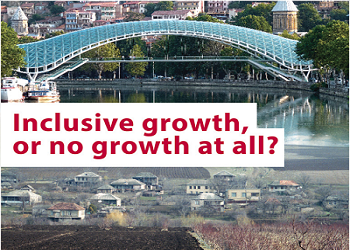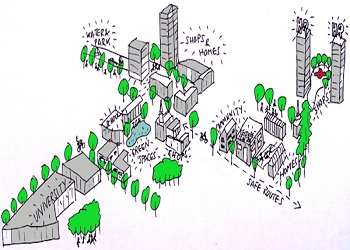- Details
Once the wealthiest Soviet republic, Georgia has since fallen far behind other post-Soviet states (except for, perhaps, Tajikistan, Kyrgyzstan and Moldova) in almost any parameter of wellbeing. Adjusted for purchasing power parity, Georgia’s annual income per capita in 2012 was close to $5,900 (a little higher than in resources-poor Armenia). Moreover, the “median” Georgian, as opposed to the “average” Georgian, is much poorer than is suggested by the per capita income estimate. Like any average measure, the income per capita figure masks significant inequality in the distribution of income, and Georgia is much less equal as compared to all of its other post-Soviet peers (with the possible exception of Russia).
Following the collapse of the Soviet Union, the Georgian nation went through a process of rapid disinvestment and de-industrialization. It was forced to shut down industrial plants, sending scrap metal abroad and pushing workers into subsistence farming or early retirement. Thanks to the country’s moderate climate and good soil conditions, hunger never became an issue, yet inequality and associated political pressures rapidly reached catastrophic dimensions, unleashing cycles of violence, undermining the political order and inhibiting prospects of economic growth.
- Details
Starting from 2005, Georgia saw a rapid decline in tertiary gross enrollment. In a country where poverty reduction is a key priority and where labor market outcomes have not been particularly strong during the last decade, the decline in higher education enrollment might appear as an additional obstacle to human and economic development.
In this report, we analyze a time series of tertiary gross enrollment in Georgia and compare Georgia to other countries in transition. We use the Integrated Household Survey (IHS) data of the National Georgian Statistics Agency (GeoStat) to analyze the socio-economic profiles of enrolled and not-enrolled students. Further, we identify the key potential factors behind decreased enrollment rates, and discuss the role of institutional changes, wages, returns to education, external and international migration, and employment patterns.
- Details
The Georgian government is currently working on the draft of a new Code on Spatial Planning and Construction, with the aim of increasing the safety of new constructions while consolidating the great achievements obtained in terms of effectiveness in the delivery of construction permits. One of the main changes that is likely to be introduced in the new Code – in line with the best practices at the international level1 – is the regulation of the qualification requirements for building designers. The current government believes that the time has come to increase the safety standards and to regulate the access to the profession of building designer.













